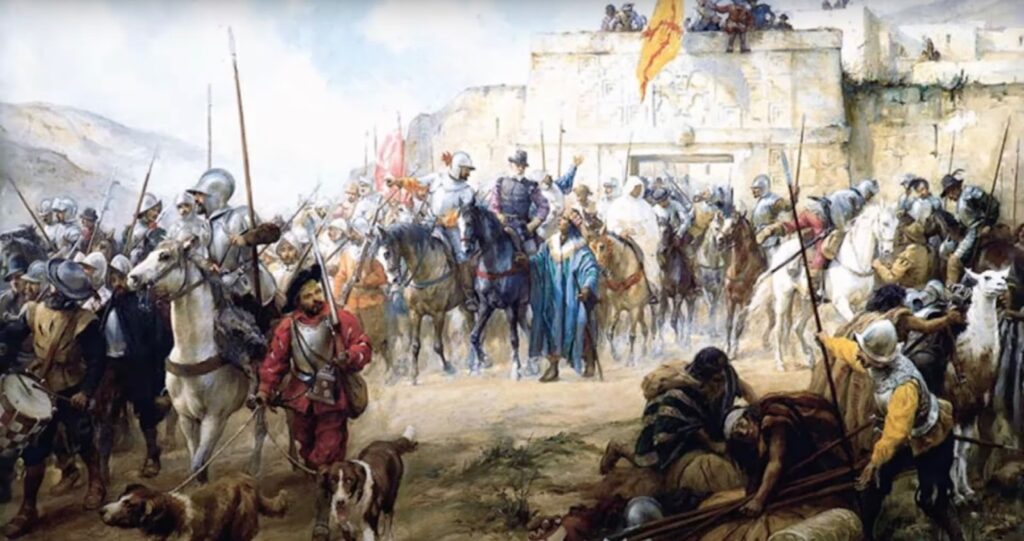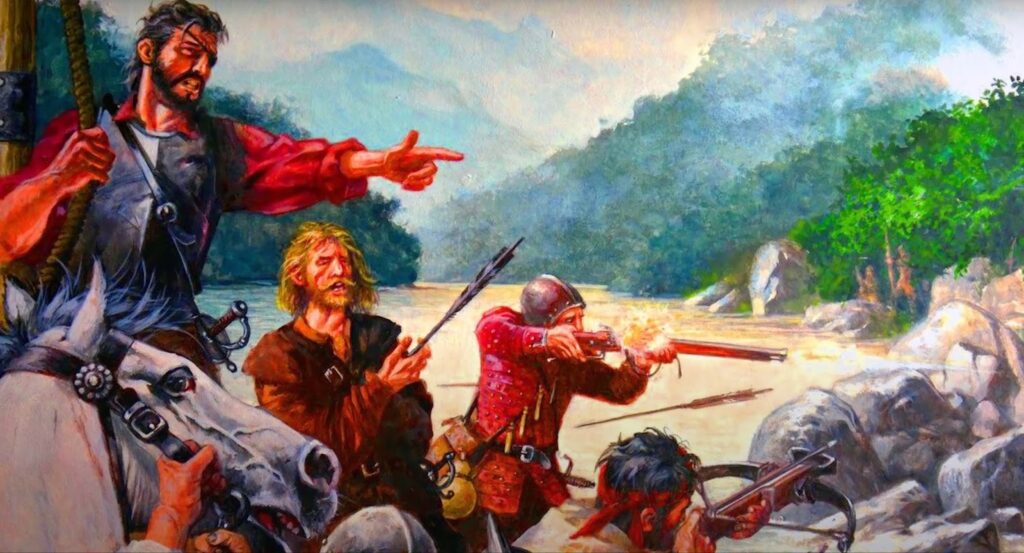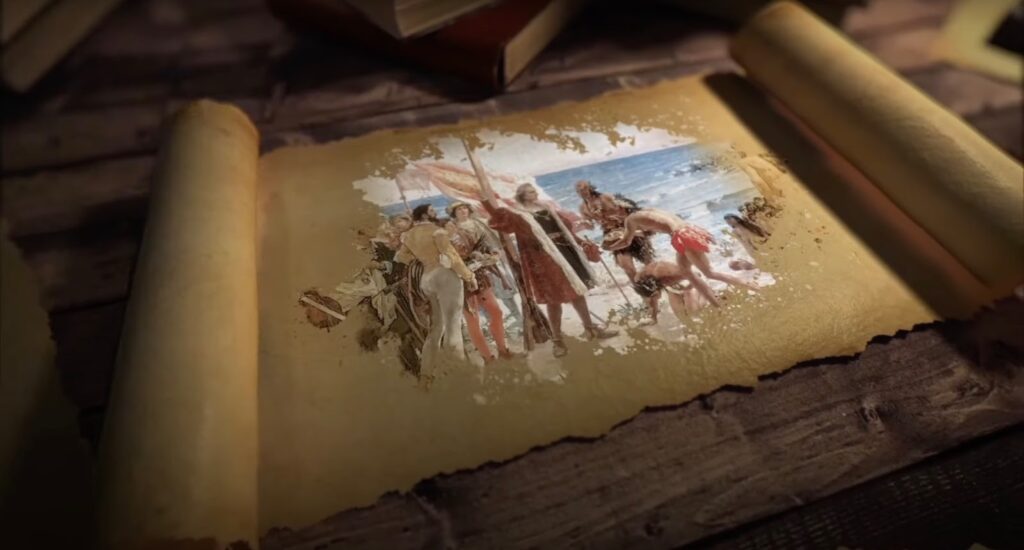Florida, also known as the Sunshine State, is a popular tourist destination known for its beautiful beaches, theme parks, and vibrant nightlife. However, beyond its modern attractions, Florida has a rich history that dates back centuries. The state has been shaped by various cultures, including Native American tribes, Spanish conquistadors, and European settlers. In this article, we will delve into the fascinating history and culture of Florida, specifically focusing on the era of the Spanish conquistadors. We will explore the impact of their arrival, their interactions with the indigenous people, and their lasting legacy in the state.
The Arrival of the Conquistadors: A Turning Point in Florida’s History
The Discovery of Florida by Juan Ponce de León
The story of Florida’s conquest begins with the arrival of Spanish explorer Juan Ponce de León in 1513. He was searching for the legendary “Fountain of Youth” when he stumbled upon the land that would later be named Florida. Ponce de León claimed the land for Spain and named it “La Florida,” meaning “land of flowers.” This marked the beginning of Spain’s influence in the state.
Exploration and Settlement by Other Conquistadors
After Ponce de León’s discovery, other Spanish conquistadors followed suit and explored the land further. In 1521, Ponce de León returned to Florida with the intention of establishing a permanent settlement. However, he was met with resistance from the indigenous Calusa tribe and was fatally wounded in battle. This setback did not deter other conquistadors from attempting to colonize Florida. In 1528, Panfilo de Narváez led an expedition to the state but was unsuccessful due to harsh weather conditions and conflicts with the Native Americans.
It was not until 1539 that the Spanish were able to establish a successful settlement in Florida. Hernando de Soto, a veteran of the conquest of Peru, landed in Tampa Bay with a fleet of ships and over 600 soldiers. He led an expedition through Florida, encountering various Native American tribes along the way. The expedition was met with resistance, and de Soto’s men engaged in battles and raids, resulting in the deaths of many indigenous people. De Soto’s expedition ultimately failed, and he died in 1542, leaving behind a legacy of violence and destruction.
The Impact of the Conquistadors on the Indigenous People of Florida
The Decline of Native American Tribes
The arrival of the conquistadors had a devastating impact on the indigenous people of Florida. The Native American tribes, who had been living in the state for thousands of years, were forced to defend their land and way of life against the invading Spanish forces. The Calusa tribe, who inhabited the southwest coast of Florida, were one of the first to encounter the conquistadors. They fiercely resisted the Spanish attempts to colonize their land, but their population declined significantly due to warfare and diseases brought by the Europeans.
Similarly, the Timucua tribe, who lived in central and northern Florida, also suffered greatly from the arrival of the conquistadors. They were forced to flee their villages and were decimated by European diseases, such as smallpox and measles. By the end of the 16th century, the Timucua population had declined by over 90%.
Forced Assimilation and Conversion to Christianity
Aside from the physical toll on the Native American tribes, the conquistadors also sought to convert them to Christianity and assimilate them into Spanish culture. This was done through forceful means, such as destroying sacred sites and forcing the indigenous people to adopt Spanish customs and beliefs. Many Native Americans were also enslaved and forced to work on Spanish plantations.
The Spanish also established missions in Florida, with the goal of converting the indigenous people to Christianity. These missions were run by Catholic priests, who taught the Native Americans about the religion and European way of life. However, the missions were not always successful, as many indigenous people resisted conversion and continued to practice their own beliefs in secret.

The Legacy of the Conquistadors in Florida
Spanish Influence on Language and Culture
Despite the negative impact of the conquistadors on the indigenous people, their arrival did leave a lasting legacy in Florida. One of the most significant influences is evident in the state’s language and culture. The Spanish language has had a profound impact on Florida, with many cities, streets, and landmarks bearing Spanish names. Even today, Spanish is widely spoken in the state, and it continues to influence the local dialect and cuisine.
The Spanish also introduced various cultural practices to Florida, such as bullfighting, which was popularized in the state during the early 20th century. The tradition of flamenco dancing, originating from Spain, is also celebrated in Florida through festivals and performances.
Architecture and Landmarks
The Spanish also left their mark on Florida’s architecture and landmarks. The city of St. Augustine, founded by Pedro Menéndez de Avilés in 1565, is considered the oldest continuously inhabited European settlement in the United States. It is home to many historic buildings, including the Castillo de San Marcos, a 17th-century fortress built by the Spanish to protect the city from invaders.
Other notable landmarks influenced by the Spanish include the Fountain of Youth Archaeological Park, which commemorates Ponce de León’s search for the mythical fountain, and the Mission Nombre de Dios, the first Catholic mission in the United States.
Cultural Diversity and Heritage
The Spanish conquest of Florida also brought about a diverse mix of cultures and heritage. The state is home to many people of Hispanic descent, who have preserved their cultural traditions and customs. This diversity is celebrated through various festivals and events, such as the annual Calle Ocho Festival in Miami, which showcases Latin American culture through music, food, and dance.
Additionally, the influence of the Native American tribes can still be seen in Florida’s art, music, and cuisine. Many indigenous traditions and practices have been passed down through generations, keeping their heritage alive in the state.
Exploring Florida’s Conquistador History: Must-Visit Sites and Attractions
Castillo de San Marcos National Monument
Located in St. Augustine, the Castillo de San Marcos is a must-visit site for anyone interested in Florida’s conquistador history. This impressive fortress, made of coquina stone, was built by the Spanish in the late 17th century to protect the city from attacks. Visitors can explore the fort and learn about its role in defending the city during the Spanish colonial period.
Mission San Luis
Mission San Luis, located in Tallahassee, is a living history museum that recreates life in a Spanish mission during the 17th century. Visitors can tour the reconstructed buildings, interact with costumed interpreters, and learn about the daily lives of the Apalachee Indians and Spanish colonists who lived there.
Ponce de León Inlet Lighthouse
Built in 1887, the Ponce de León Inlet Lighthouse is the tallest lighthouse in Florida and one of the oldest in the country. It is named after Juan Ponce de León and stands as a tribute to his discovery of Florida. Visitors can climb the 203 steps to the top of the lighthouse for breathtaking views of the surrounding area.
Fountain of Youth Archaeological Park
Located in St. Augustine, the Fountain of Youth Archaeological Park is a popular tourist attraction that commemorates Ponce de León’s search for the mythical fountain. Visitors can explore the park and learn about the history of the site through exhibits, demonstrations, and reenactments.
The Legacy of the Conquistadors: Controversies and Criticisms
While the conquistadors have left a lasting legacy in Florida, their actions have also been met with criticism and controversy. The Spanish conquest of Florida was marked by violence, exploitation, and forced assimilation, which had a devastating impact on the indigenous people. Many historians argue that the Spanish were more interested in wealth and power than spreading Christianity or establishing peaceful relations with the Native Americans.
The legacy of the conquistadors has also been questioned in recent years, with calls to remove monuments and rename landmarks that honor them. Some argue that these symbols glorify a dark period in Florida’s history and should be replaced with more accurate depictions of the state’s past.

Preserving Florida’s Conquistador History: The Role of Education and Tourism
Despite the controversies surrounding the conquistadors, it is essential to preserve and educate future generations about Florida’s rich history. This can be achieved through various means, such as educational programs, museums, and tourism.
Educational programs can teach students about the diverse cultures and events that shaped Florida, including the era of the conquistadors. By learning about the state’s past, students can gain a better understanding and appreciation for its present.
Museums and historical sites, such as those mentioned above, play a crucial role in preserving Florida’s conquistador history. They provide visitors with an immersive experience and offer a deeper understanding of the state’s past.
Tourism also plays a significant role in preserving Florida’s history. By visiting these sites and learning about the state’s past, tourists can contribute to their preservation and support ongoing efforts to educate others about Florida’s rich cultural heritage.
Exploring Old Town Sarasota
Amidst this tapestry of history and culture, Old Town Sarasota stands as an oasis of heritage. Located on Florida’s Gulf Coast, this historic district encapsulates the essence of a bygone era, brimming with preserved architecture, quaint streets, and a palpable sense of nostalgia. Inhabiting the heart of Sarasota, it seamlessly integrates with the broader narrative of Florida’s past.
Old Town Sarasota, with its vintage charm, embodies a chapter in Florida’s history where Spanish influences converged with the tapestry of Native American legacies. It serves as a living testament to the enduring interplay of cultures that have shaped the Sunshine State.
Conclusion
The arrival of the conquistadors in Florida marked a turning point in the state’s history. Their actions had a significant impact on the indigenous people, shaping the culture and heritage of Florida as we know it today. While their legacy is not without controversy, it is essential to preserve and educate future generations about this period in Florida’s past. By doing so, we can gain a better understanding and appreciation for the diverse cultures that have shaped the Sunshine State into the vibrant and unique destination it is today.
